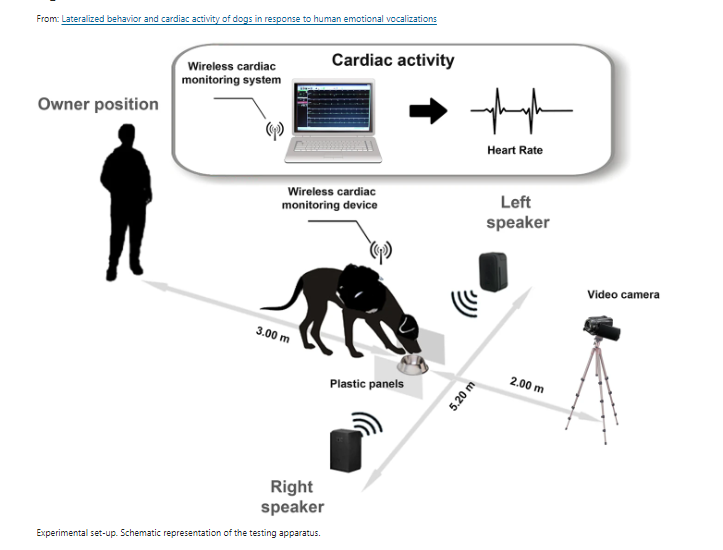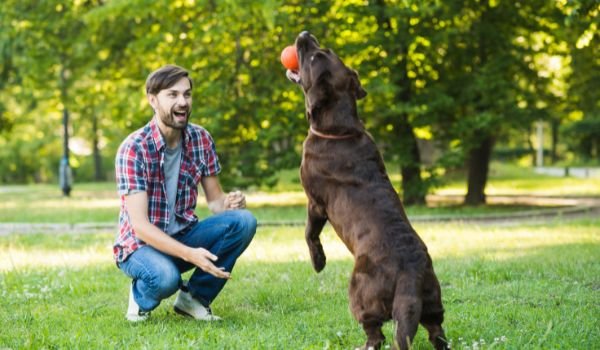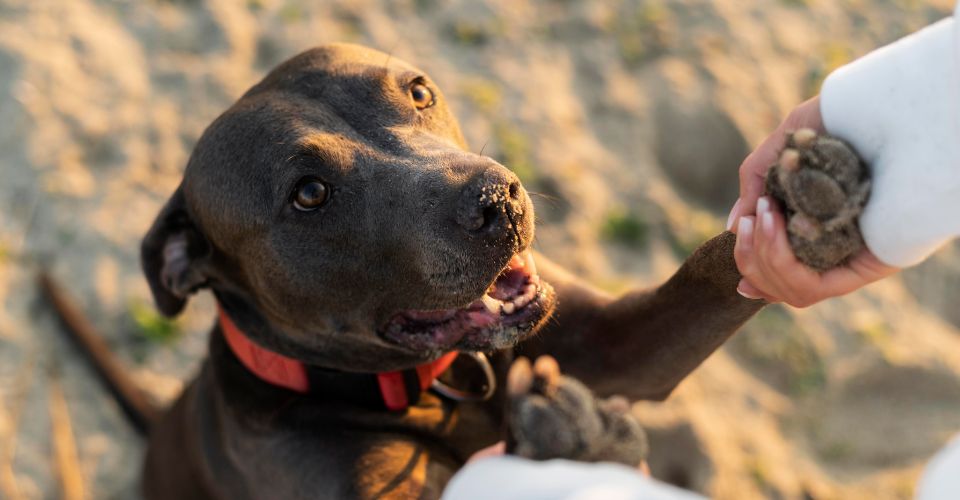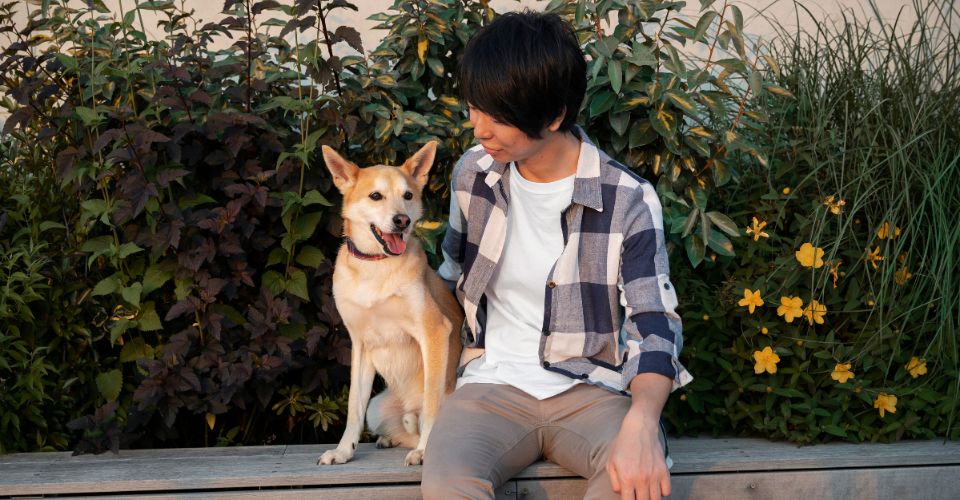Dogs have a unique ability to understand what you are feeling. They can interpret whether you are feeling happy or sad. Being loving pets, they try their best to help us get through tough times by cuddling and licking. It seems a cute gesture of a pet to reassure if their owners are okay or not. But how’s it possible for dogs to know that we are sad or happy? Does my dog know when I’m sad?
What is going on behind the cute eyes of your dog that makes them capable of understanding our feelings? Are dogs capable of smelling depression? What is the science behind dogs’ ability to detect sadness in humans?
Let’s try to figure out the answers to these questions in depth in this article.
Can Dogs Sense When You Are Feeling Down?
If you are a dog owner, you might have an experience with this thing, whatever it may be, where when you were about to cry, but your furry friend came and started cuddling. You might have thought that it happened by chance. But it didn’t. The research was initiated to understand whether dogs are receptive to emotional cues from human vocalizations. The results showed that these furry creatures do notice when you are sad and try to comfort you by hugging, licking, playing, etc. Dogs don’t leave their owners alone during harsh times and show their unconditional love for you.
The research conducted on this topic has also proved that dogs are capable of understanding the health condition and moods of humans. “Evolutionary and ontogenetic processes played a pivotal role in dogs’ ability to detect social information from human behavior, providing the basis for complex forms of interspecific social communication,” concludes a study, Discrimination of Familiar Human Faces in Dogs (Canis familiaris).
The sixth sense of dogs is strong enough to suggest whether their human buddies are stressed, ill, or sad.
How Do Dogs Process Human Emotions by Hearing Different Vocalizations?
Research has shown that dogs can read human facial expressions and understand human emotions. They possess a special skill in understanding what a human is feeling at a particular time. Recently research was conducted at Bari Aldo Moro University (Italy) to understand the procedure involved in how dogs process human emotions.
An experiment was conducted in an isolated room at Bari University to consider the impact of different emotional sounds on dogs. Two speakers connected to a sound mixer were placed at an equal distance from the food bowl. A digital video camera was positioned on a tripod stand at the front of the bowl in the setup to record the response of dogs to various stimuli. A wireless cardiac monitoring device was put in a particular place in the setup to monitor the heart rate of dogs.

During the experiment, pet owners had to lead the dog to the food bowl on a loose leash. Once the dog takes the right position (i.e., it is standing right between the speakers and in front of the camera) and starts eating from the bowl, the owner had to unleash the dog and stand behind the dog at a distance of around 3m. After this, stimuli were played, and the reactions of dogs were monitored through different devices. The reactions of dogs after listening to different sounds were recorded and observed through webcams.
Various sounds of emotions such as fear, sadness, anger, surprise, and happiness were expressed and projected toward dogs one by one via speakers. Sounds of sadness were conveyed to dogs in the form of sobs, whereas the feeling of happiness was demonstrated as laughing sounds.
It was concluded from the research that dogs can even read human emotions using their ears. The right side of the dog’s brain processes negative emotions, while the left side detects positive emotions.
This research was conducted on a sample of 14 male and 16 female dogs. All these dogs were pets living in homes with their human pet parents. The results proved that dogs can interpret a wide range of human emotions expressed in the form of sounds just by listening to vocalizations.
Do Dogs Really Recognize Humans’ Sadness and Emotions?
Research also proved the fact that dogs are sensitive toward emotions expressed by human faces. Dogs can detect and discriminate facial expressions of humans, which helps them to decipher the feelings and emotions of their human buddies.
It is believed that an adult dog’s mind possesses the same mental capabilities, vocabulary understanding, and emotional intelligence as that of a human toddler. The canine IQ test revealed the fact that an average dog has mental abilities similar to a 2-year-old child.
When we are sad and express our sadness, our dogs feel distressed. So, they try to do something to calm their owners and help them get through it. One of the unique behavior reported under such circumstances was that dogs also become sad when they see their owners are depressed.
However, most dogs try to give comfort to their owners when they are sad.
How Does A Dog Respond To Your Sadness?
Dogs may show their empathy for humans in many different ways.
A few of them are discussed below:
Stay Close to You
Your dog may come to you to display their empathy when you are sad. Many dogs comfort their owners by placing their heads on their laps to show their love. They may even start licking your hands or foot to show affection to help you come out of stressful situations.
Distracting Tools
Sometimes when dogs notice that their owners are stressed, they may try to distract them by acting playfully. Some dogs try to cheer their human friends by doing silly acts such as:
- Throwing the ball to convince humans to play with them
- Initiate a cute fight with you by biting your clothes or foots
- Do any other cheerful act to divert your mindset

Staying Silent and Giving Space to Owners
Some dogs love their owners in a way that they become distressed by seeing their human buddies being sad. They might not be able to come to you and show affection because they themselves become down by seeing you sad. You might think that your dog is ignoring you, but they are not!—they are giving you the necessary space you need.
What Is the Science Behind Dogs’ Ability To Smell Depression?
Dogs have a powerful sense of smell—they possess 300 million olfactory receptors in their noses, compared to about six million in humans. Sometimes this powerful sense of smell is referred to as the dog’s 6th sense. These furry creatures are too good at detecting the production of various hormones and chemicals within our bodies.
Serotonin
It is a chemical responsible for the regulation of anxiety, mood, and happiness in humans. A low level of serotonin is usually associated with depression. When a human is sad, dogs can detect depression by judging the increase or decrease in the level of serotonin.
Cortisol
Also known as the stress hormone, it is associated with anxiety levels. People who are depressed tend to have elevated cortisol levels in their bloodstream, along with low levels of serotonin in the brain. When a dog senses a rise in cortisol in your bloodstream, they get to know that you are feeling depressed.
So, your dog may react in a comforting and supportive way to decrease your anxiety level.
Signs Your Dog Senses Your Depression
When dogs observe that you are down, they might respond in a loving way to their owners. You can interpret from the behavior of your pet that he has sensed your depression and is now trying to comfort you. They might also try to get closer to you and start cuddling as they know that their cuddles can help relieve a bit of stress.
The signs exhibited by dogs when they sense depression are raised paws, tilting of the head, licking, approaching you, and leaning into you to comfort their human buddies.

Why Dogs Are Ideal for People With Post-Traumatic Stress Disorder?
Keeping a dog is an effective technique to lift one’s mood; it is scientifically proven that having a dog help to ease your anxiety, boost your self-confidence, and has an overall calming effect on your mental health.
People who are going through stressful times can go for developing a friendship bond with dogs that will help them to come out of the stressed stage. Being a dog owner, one feels energetic and active because these furry animals love to listen to their owners without judging or criticizing them. Besides, they can be great companions on your walks or indoor games.
All of the tactics used by dogs to help their owners to feel good really help people to deal with post-traumatic stress disorder. Emotional support dogs can be the best choice for such people as they don’t need special training. Similarly, therapy dogs are also famous and are now being used at offices, schools, and hospitals to provide comfort to upset, stressed people who need a canine company to chill their mood.
Recently, a research study found that “spending just ten minutes with therapy dogs improved hospital patients’ overall well-being. Compared to patients who hadn’t spent time with therapy dogs, those who did reported significantly lower levels of anxiety and depression following the visit.”
Training a Dog to Smell Depression
Dogs are unique creatures who are blessed with the ability to detect a huge spectrum of smells. So, when humans are anxious, and when their facial expressions show signs of stress, dogs may smell the chemicals being released from the human body. Dogs can learn to create a certain connection with specific kinds of smells. Therapy dogs and emotional support dogs are trained to help out humans.
For example, dogs can associate the sweating smell of humans with a higher level of anxiety. They may interpret anxiety or stress levels based on other factors such as the release of cortisol, crying sounds, stressed facial expressions, etc. Once they detect it, they act accordingly to provide comfort and support to humans. Dogs can also be trained to react differently to different smells.
The emotional support provided by a pet in the ups and downs of life has no match. One feels so relaxed and calm when we notice that our friends really have a special feeling for us and are putting their efforts in to support us through the ups and downs, the highs and the lows. The irreplaceable friendship and unconditional love of dogs are enough to bring a smile to our faces during our dark days.





